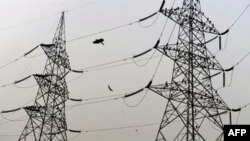U.S. Commerce Secretary Gary Locke was in New Delhi, Mumbai, and Bangalore, leading a trade mission to promote U.S. exports of civil nuclear energy, civil aviation, defense, homeland security, information, and communications technologies. Secretary Locke delivered the keynote address at a Confederation of Indian Industry function in New Delhi, where he discussed how the U.S. can help India meet its ambitious development goals, and provide more economic opportunities for people in India and America.
"Between 2004 and 2008, trade doubled between India and the United States," Secretary Locke said, "And this past November, the United States implemented reforms to our export controls that will treat India similarly to our closest allies and trading partners."
Secretary Locke said that while the abilities of the Indian people are vast, the capacity of India's infrastructure is not.
The McKinsey Global Institute projects that India will need $1.2 trillion in capital investment by 2030 to upgrade and expand electric grid, water, communications, and transportation infrastructure; including 2.5 billion square meters of new paved roads, and 7,400 kilometers of new metros and subways.
"The message I want every Indian citizen to hear . . . is that U.S. businesses can work with you to achieve your ambitious development goals," Secretary Locke said, "They can partner with Indian high-technology companies to build high-speed Internet infrastructure so doctors in rural India can seek instant consultations with a doctor in Delhi about a CT scan or X-ray. They can provide state-of-the-art technologies to modernize your electric grid and your power generating systems so you can deliver electricity to hundreds of millions of rural Indians. They can help you build the world's best planes and the roads and rail lines you need to transport Indian-made goods throughout the country and throughout the world."
"Seizing the full potential of our cooperation will require India to take further steps to open its economy, including: reducing a variety of tariff and non-tariff barriers; lifting restrictions on foreign direct investment; and improving the protection on intellectual property," said Secretary Locke. "If India continues its walk down the path of reform, . . . it will stand a much better chance of meeting the needs of its people, [and to help] lead the global economy in the 21st century."
U.S. - India Trade Relations

"Seizing the full potential of our cooperation will require India to take further steps to open its economy."















